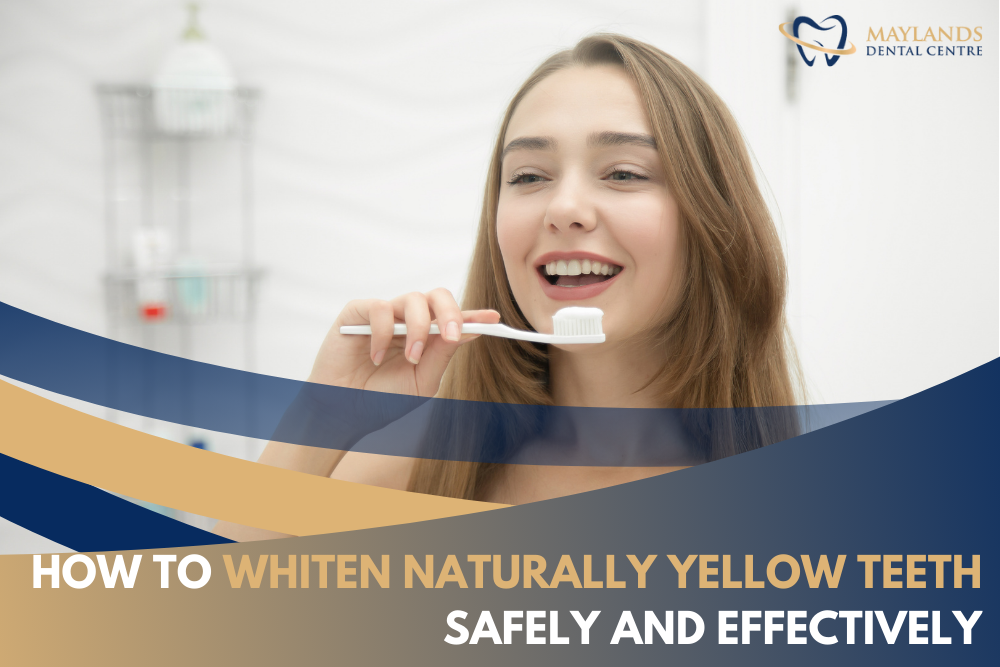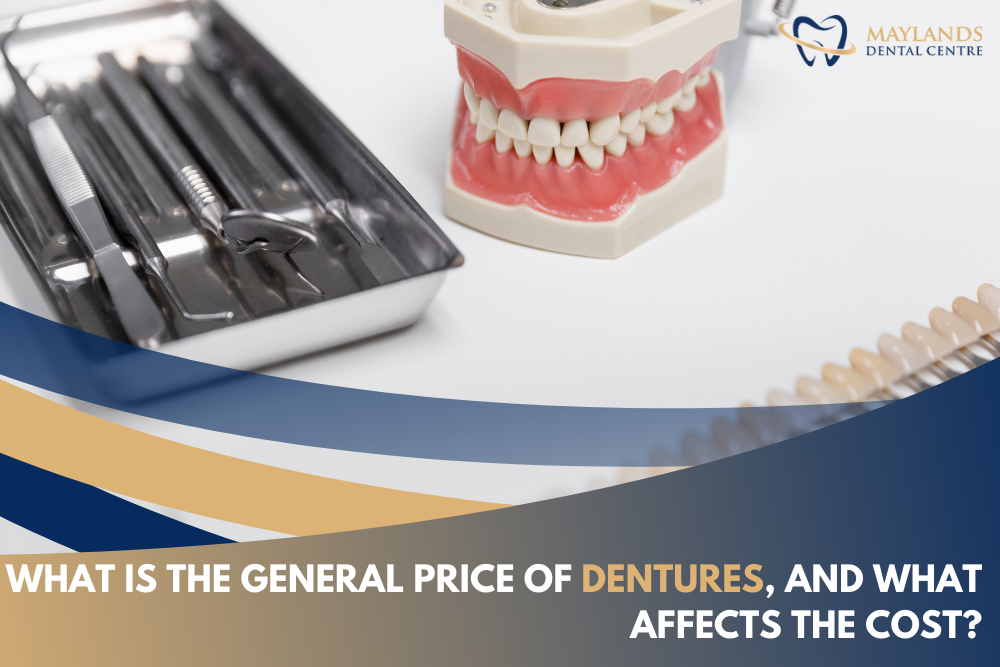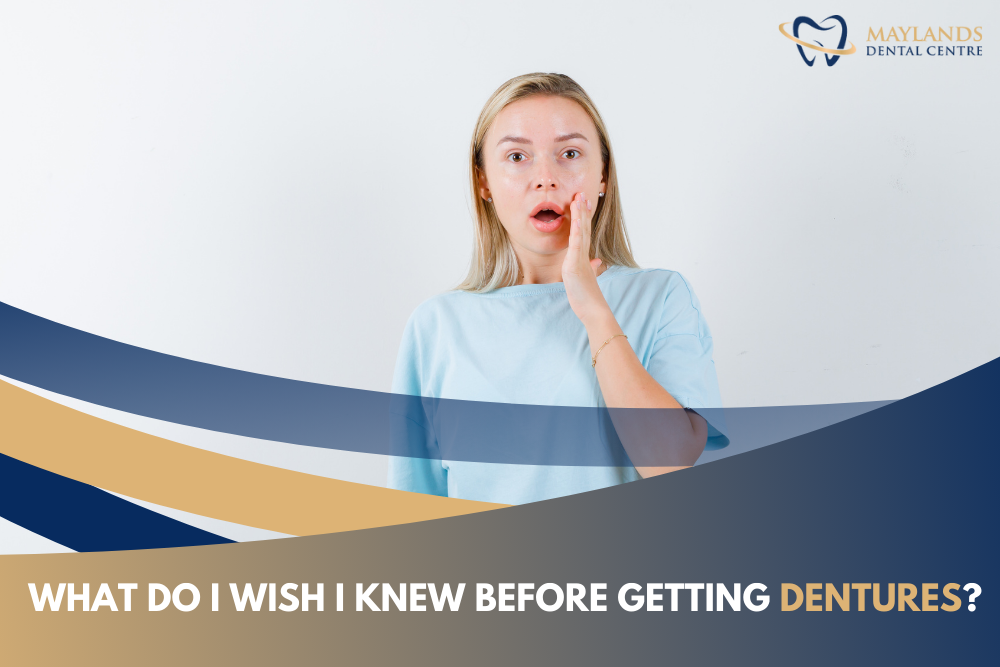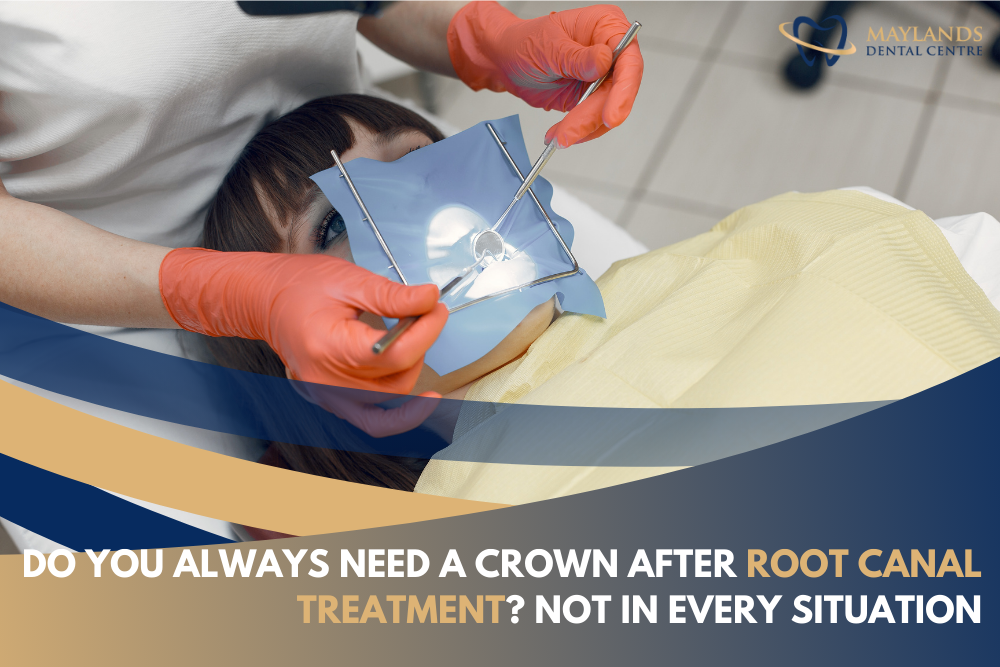Even with good oral hygiene, some people notice their teeth appear naturally more yellow due to enamel transparency and underlying dentine. It can be disheartening when whitening products fail to deliver the expected results. Understanding why these treatments fail is the first step towards finding real options. “How to whiten naturally yellow teeth?” It starts with knowing the cause.
Unlike surface stains from coffee or chewing tobacco, natural yellowing comes from within the tooth, where whitening agents can’t reach. This discolouration results from dentine colour showing through enamel, often influenced by genetics or age. Treatment varies by cause; your dentist will assess if cosmetic restorations may suit your discolouration type. A personalised dental assessment is essential to determine the safest and most suitable option for your smile.
Blog Navigation
- Summary of the Content:
- Why Your Teeth Are Naturally Yellow (And Why It Matters)
- Understanding Intrinsic Stains vs. Extrinsic Stains: Why Traditional Whitening Fails
- Effective Professional Whitening Treatments for Naturally Yellow Teeth
- Can Whitening Help at All?
- What Doesn't Work (And Why You Should Avoid It)
- Choosing the Right Treatment for Your Situation
- Maintaining Your New Smile
- Final Thoughts
Summary of the Content:
- Naturally yellow teeth are often caused by internal tooth structure rather than poor hygiene. This makes traditional whitening methods ineffective for many people.
- Tooth enamel is semi-translucent, allowing the yellowish dentine beneath to show through. This natural anatomy influences your tooth shade from within.
- Genetic traits determine your enamel thickness and dentine colour. These inherited features shape your natural tooth appearance.
- Intrinsic stains occur within the tooth and cannot be removed with whitening products. These stains often require restorative treatments, such as veneers or crowns.
- Extrinsic stains are surface-level and respond well to whitening. However, they can return without proper maintenance and lifestyle changes.
- Professional assessment helps distinguish intrinsic versus extrinsic causes. This is essential to choose a treatment that aligns with your condition and goals.
- Treatments like bonding, veneers, or crowns may offer more effective results. Your dentist can recommend the most suitable approach based on your unique needs.
Why Your Teeth Are Naturally Yellow (And Why It Matters)

Many people are surprised to learn that naturally yellow teeth often have nothing to do with poor hygiene or staining habits. Below are the primary reasons why this occurs, and understanding them can guide you towards the most appropriate treatment options:
- Tooth Enamel Is Translucent by Nature:
The outer layer of your teeth, known as enamel, is semi-translucent and does not contain any pigmentation. This means it allows the colour of the underlying dentine to partially show through. - Dentine Gives Teeth Their Natural Yellow Hue:
Beneath the enamel lies dentine, a dense tissue that has a naturally yellow or creamy shade. The more translucent your enamel, the more the dentine colour is visible—contributing to a naturally yellow appearance. - Genetics Determine Your Baseline Tooth Colour:
The thickness and translucency of your enamel, as well as the colour of your dentine, are largely determined by genetics. Just as we inherit eye or hair colour, we also inherit traits that affect the shade of our teeth. - Ageing Intensifies Yellowing Over Time:
As you age, enamel naturally becomes thinner due to wear and exposure to acids, making the dentine underneath more visible. At the same time, dentine tends to darken slightly with age, increasing the overall yellow appearance of the tooth. - Intrinsic Discolouration Comes from Within the Tooth:
Naturally yellow teeth result from intrinsic discolouration, which means the colour comes from inside the tooth structure. This is why whitening products often show little to no effect on these cases. - This Is a Common and Normal Variation:
Having yellow-toned teeth is not a sign of disease or poor dental care. It’s a normal variation in tooth colour that many people experience. While it’s understandable to want a whiter smile, it’s important to know that this isn’t a health issue. - Why This Knowledge Matters When Choosing Treatments:
Understanding whether your tooth discolouration is intrinsic or extrinsic helps dental professionals recommend the most effective options. Intrinsic discolouration often requires restorative options, such as veneers or bonding, rather than over-the-counter whitening products.
Yellow teeth can be a natural and healthy variation resulting from genetics, ageing, and variations in enamel structure. Understanding this helps you explore appropriate, personalised treatments instead of relying on whitening products that may not work effectively.
Understanding Intrinsic Stains vs. Extrinsic Stains: Why Traditional Whitening Fails
Understanding the difference between intrinsic and extrinsic stains is essential for anyone asking, “How to whiten naturally yellow teeth?” Not all discolouration responds to whitening products, and recognising the underlying cause can help guide patients towards effective, evidence-based treatment options.
Intrinsic Stains
- Originates in the Tooth Structure:
Intrinsic stains occur when the inner layer of the tooth (called dentine) shows through the enamel. These stains are often yellow or grey and result from genetics, ageing, trauma, or exposure to certain medications during tooth development. - Enamel Transparency Plays a Key Role:
Tooth enamel is semi-translucent, which allows the naturally yellow dentine beneath to influence the overall tooth colour. Thinner enamel, whether genetic or age-related, increases the visibility of the yellow dentine. - Whitening Products Cannot Reach These Stains:
Most over-the-counter and professional whitening agents rely on hydrogen peroxide or carbamide peroxide, which break down surface stains. However, these chemicals cannot penetrate deep enough to alter the natural colour of the dentine. - Examples of Intrinsic Discolouration:
Discolouration encompasses common causes like tetracycline staining during childhood, trauma to the tooth, fluorosis, or naturally yellow teeth resulting from genetic factors. These often require restorative treatments, such as veneers or crowns, rather than conventional whitening.
Extrinsic Stains
- Caused by External Substances:
Extrinsic stains form on the enamel surface due to external factors, including the consumption of coffee, tea, red wine, and tobacco products. Poor oral hygiene can also contribute to the buildup of surface stains that affect the appearance of your teeth. - Whitening Products Can Remove These Stains:
Whitening agents are often effective, working either through chemical bleaching or by gently removing surface stains with mild abrasion. Professional treatments may enhance results, especially when combined with cleaning procedures such as scaling and polishing. - Stains May Return Without Maintenance:
Since these stains result from ongoing habits, they can return if contributing factors are not addressed. Dentists often recommend limiting foods that stain and maintaining good oral hygiene to prolong the results. - Easier to Address with Conventional Methods:
Extrinsic stains are usually more predictable and often respond well to whitening toothpastes, trays, or professional bleaching treatments. Intrinsic discolouration typically does not lighten significantly with these methods and may require alternative dental treatments for improvement.
Understanding which type of tooth discolouration you have is the first step to choosing the right treatment. A professional assessment is essential to determine whether whitening, bonding, veneers, or other approaches will provide the most realistic outcome.
Effective Professional Whitening Treatments for Naturally Yellow Teeth
While over-the-counter products may claim to naturally whiten teeth, they cannot change the underlying dentine colour responsible for intrinsic yellowing. Addressing naturally yellow teeth often involves cosmetic restorations rather than traditional whitening. These professional options aim to improve appearance while preserving oral health. Treatment choice depends on factors like discolouration severity, tooth condition, and long-term goals.
Porcelain Veneers
Porcelain veneers are thin, custom-made shells designed to cover the front surface of teeth and mask natural discolouration. They are crafted from durable ceramic and bonded securely to the visible surface of each addressed tooth. Veneers do not alter the tooth’s internal structure but provide an external cosmetic improvement. Their colour and shape are tailored to match or enhance the patient’s existing smile.
The veneer process typically involves tooth preparation, impressions, and final placement by a qualified dental professional. Most veneers last 10-15 years with proper care and maintenance. Candidacy depends on factors such as enamel thickness, gum health, and the absence of severe tooth damage or decay. Because veneers are irreversible, a comprehensive clinical assessment is essential before proceeding.
Dental Bonding
Dental bonding is a minimally invasive treatment that can improve the appearance of mildly yellow or discoloured teeth. A dentist applies a tooth-coloured resin to the front surface of the affected teeth. This resin is shaped, hardened with a special light, and polished for a natural appearance. Bonding can be a suitable option for patients seeking an affordable, conservative alternative to veneers.
While bonding is reversible and generally less costly, it does have a shorter lifespan of around three to seven years. It may stain over time and is more vulnerable to wear compared to porcelain restorations. Bonding is good for minor discolouration without underlying structural damage to the tooth. A qualified dental professional should assess suitability during consultation.
Dental Crowns
Dental crowns offer full cover for teeth that are severely discoloured or structurally compromised due to damage or decay. Unlike tooth whitening methods, crowns conceal intrinsic discolouration by encasing the entire visible tooth structure. They also restore function by reinforcing weakened enamel and protecting against further deterioration. Dentists often recommend crowns when other options, like veneers or bonding, are not suitable due to the tooth’s condition.
The treatment involves reshaping the tooth and fitting a custom-made crown, typically crafted from porcelain, zirconia, or metal alloys. Crowns can last 5–15 years with proper care and maintenance. Because they require significant enamel reduction, this option is considered irreversible and should be carefully assessed. A personalised dental examination is essential to determine if a crown is the most appropriate and beneficial choice.
Can Whitening Help at All?
Whitening treatments may help slightly if you have both natural yellowing and surface stains on your teeth. Professional whitening can remove external tooth stains caused by foods, drinks, or tobacco. However, it cannot change the natural dentine colour beneath your enamel. This means results are often limited when intrinsic yellowing is present.
It’s important to have realistic expectations when exploring options to whiten teeth, especially if the yellow tone is due to dentine colour. If internal factors cause the yellow tone, whitening will not significantly alter the appearance. A dentist can assess whether surface stains are contributing to your overall discolouration.
In some cases, whitening may be included as part of a comprehensive cosmetic plan that also involves restorative treatments. For example, whitening may precede veneers or bonding to achieve more uniform results. Your dentist will recommend this only if appropriate for your tooth structure and goals. Always consult a professional to determine if whitening is suitable for your condition.
What Doesn't Work (And Why You Should Avoid It)
In an effort to whiten your teeth at home, some people turn to DIY treatments like lemon juice or baking soda. However, these substances—like many acidic foods—can erode enamel over time. Over-the-counter whitening kits only remove surface stains and lack the natural whitening properties to change internal dentine colour. Research shows many online whitening products are poorly labelled, inconsistently formulated, and lack clear safety information for consumers.
Naturally yellow teeth usually result from thin enamel and visible dentine, which whitening products cannot alter. Using harsh home treatments on already thin enamel increases the risk of permanent damage and discomfort. Always consult a dental professional before starting any whitening treatment to avoid risks and help achieve effective results.
Choosing the Right Treatment for Your Situation
Choosing the right treatment for naturally yellow teeth is a personalised decision that depends on a combination of clinical and aesthetic factors. A professional dental evaluation plays a central role in determining the most suitable approach for your unique situation. Below are the key considerations that influence treatment selection:
- Severity of Discolouration Matters:
The severity of natural yellowing helps your dentist determine whether conservative or more comprehensive treatment options are suitable. Mild cases may benefit from bonding, while moderate to severe discolouration often requires veneers or crowns to improve appearance. More severe discolouration often requires treatments that completely mask the underlying tooth colour. - Tooth Structure and Oral Health Play an Essential Role:
Healthy teeth with sufficient enamel and no underlying issues may support more conservative cosmetic treatments. In contrast, teeth with structural damage, decay, or worn enamel may require restorative procedures to improve appearance and function. A comprehensive dental examination will thoroughly evaluate these factors. - Aesthetic Goals Should Be Clearly Communicated:
Every patient has a different vision of their ideal smile. If you want subtle brightening or a dramatic change, share your goals clearly with your dentist. Your dentist will tailor treatment recommendations to match your expectations, guiding you towards realistic and clinically appropriate outcomes. - Budget Can Narrow or Expand Options:
While specific costs vary, your budget may influence whether certain treatments—like dental bonding, veneers, or crowns—are practical choices. During your consultation, your dentist will help you understand the trade-offs between longevity, maintenance, and upfront costs without making financial promises. - Timeline Preferences Affect Planning:
If you have a short timeframe—like preparing for a special event—certain treatments may be prioritised for their faster turnaround. Others may require multiple visits or laboratory fabrication, which should be considered when planning your care. - Treatment Effectiveness Must Be Balanced With Invasiveness:
Some treatments, such as veneers or crowns, offer long-lasting aesthetic improvements but involve irreversible alterations to your natural teeth. Less invasive options may be reversible but may not achieve the same results. Your dentist will help you weigh these aspects according to your comfort and expectations. - Individualised Assessment Is Essential:
There is no universal option for naturally yellow teeth. Treatment must be based on individual assessment of enamel thickness, dentine colour, bite alignment, gum health, and aesthetic preferences. For example, some materials may not be suitable for patients prone to gum irritation, while others may affect the function of your bite. Generalised options may not be appropriate for everyone. - Comprehensive Consultations:
Your dentist may utilise diagnostic tools, such as intraoral imaging and shade matching, during your consultation. These assessments help inform treatment planning by evaluating tooth colour, enamel condition, and overall oral health. This approach adheres to clinical guidelines, guiding the development of safe, appropriate, and tailored recommendations.
Selecting the right treatment involves collaboration between you and your dentist. A careful, individualised approach supports a final result that is safe and meets your expectations.
Maintaining Your New Smile
Maintaining the results of your cosmetic dental treatment is essential for preserving function and appearance over time. Cosmetic restorations, such as veneers, bonding, and crowns, are designed for durability when properly cared for and maintained. Their longevity depends on maintaining good oral hygiene, adopting healthy lifestyle habits, and undergoing regular professional assessments by a qualified dental practitioner. Below are recommendations to help you maintain your new smile safely and effectively.
- Commit to Consistent Oral Hygiene:
Brush your teeth twice daily with a soft-bristled toothbrush and fluoride toothpaste, and floss at least once a day. Consistent oral hygiene reduces the risk of decay around bonded areas or under crowns, which can otherwise compromise the integrity of the restoration. - Avoid Abrasive Products:
Refrain from using whitening toothpaste or charcoal powders on restorations, as they often contain abrasives that can scratch the surface. These abrasives can dull the finish of veneers, crowns, or bonding, reducing their appearance and longevity over time. - Minimise Stain-Causing Foods and Drinks:
Limit consumption of red coffee, tea, and pigmented foods, especially with composite bonding, which is more porous and prone to staining. Rinsing with water after meals can help reduce discolouration over time, although porcelain restorations are more stain-resistant. - Protect Teeth from Excessive Force:
Avoid biting hard objects like ice, pens, or fingernails, which can chip or fracture restorations. If you grind or clench your teeth, consider consulting your dentist about getting a custom-fitted nightguard for protection. Night-time grinding can contribute to premature wear or failure of cosmetic dental restorations, including veneers, bonding, and crowns. - Prioritise Regular Dental Checkups:
Visit your dentist every six months for professional cleanings and to monitor the condition of your restorations. These visits help your dentist detect early issues such as marginal leakage or fractures before symptoms become noticeable. Early identification enables prompt management, thereby reducing the risk of more extensive damage to your dental restorations. - Be Aware of Signs Needing Attention:
Tooth sensitivity, edge chipping, changes in bite, or staining along restoration margins may indicate the need for professional evaluation. Early intervention can help prolong the lifespan of the restoration and prevent the need for more extensive treatments. - Plan for Future Maintenance or Replacement:
Over time, restorations may require re-polishing or complete replacement. Your dentist can provide a general timeline for your restoration, based on a clinical examination and your needs. Regular dental monitoring helps detect wear or changes early, allowing timely and conservative management without over-treatment. - Protect Your Investment with Proactive Care:
Although cosmetic treatments offer aesthetic and functional improvements, they are not one-time options. Proper care, routine maintenance, and timely intervention help protect your investment and maintain optimal results.
By following these tailored care strategies, you can significantly extend the life of your cosmetic dental restorations. Your dentist will guide you with personalised advice to support your oral health and help maintain your smile’s appearance and function.
Final Thoughts
Naturally yellow teeth are caused by internal tooth structure, not surface stains, so whitening products won’t change their colour. Treatments like porcelain veneers, dental bonding, and crowns are designed to effectively mask this internal discolouration. These options require a professional assessment to determine what is safe, suitable, and realistic for each patient’s needs. “How to whiten naturally yellow teeth?” It begins with understanding that restorative treatments—not over-the-counter whitening—are the right option.
While these options require more investment and care, they can offer long-lasting results for those seeking aesthetic improvement. Consulting a qualified dentist guides you towards the most suitable treatment based on your tooth structure and oral health. At Maylands Dental Centre, we welcome patients ready to explore cosmetic options with personalised guidance. Book a consultation today to discuss how modern dentistry can help you feel more confident in your smile.


 By Maylands Dental Centre
By Maylands Dental Centre 





 General Dentistry
General Dentistry Cosmetic Dentistry
Cosmetic Dentistry Restorative Dentistry
Restorative Dentistry Dental Implants
Dental Implants Orthodontics
Orthodontics Sleep Dentistry
Sleep Dentistry Childrens Dentist
Childrens Dentist Cosmetic Procedures
Cosmetic Procedures Health Funds
Health Funds Government Schemes
Government Schemes Payment Plan Options
Payment Plan Options